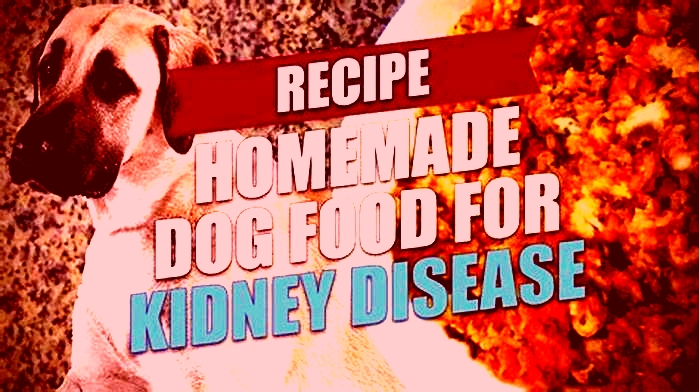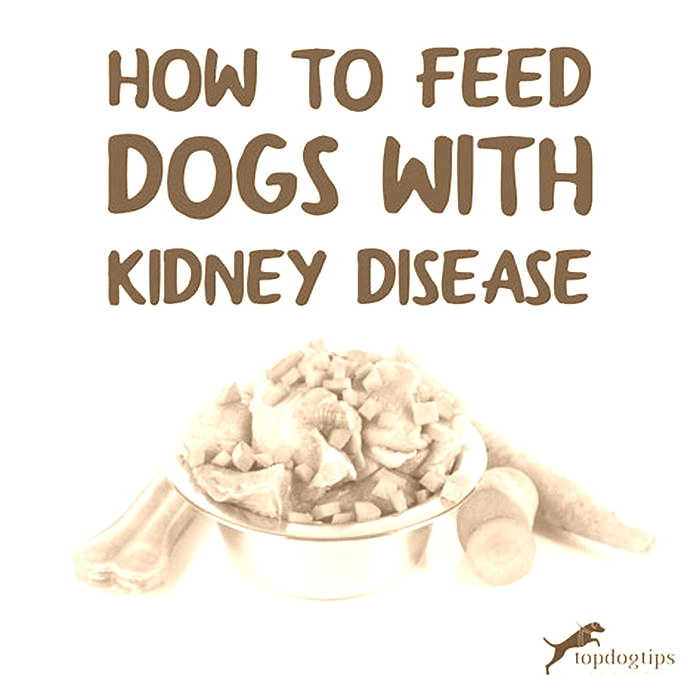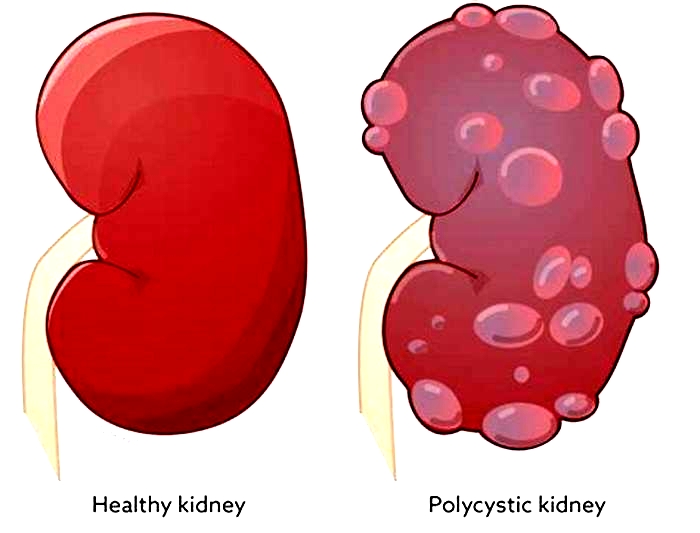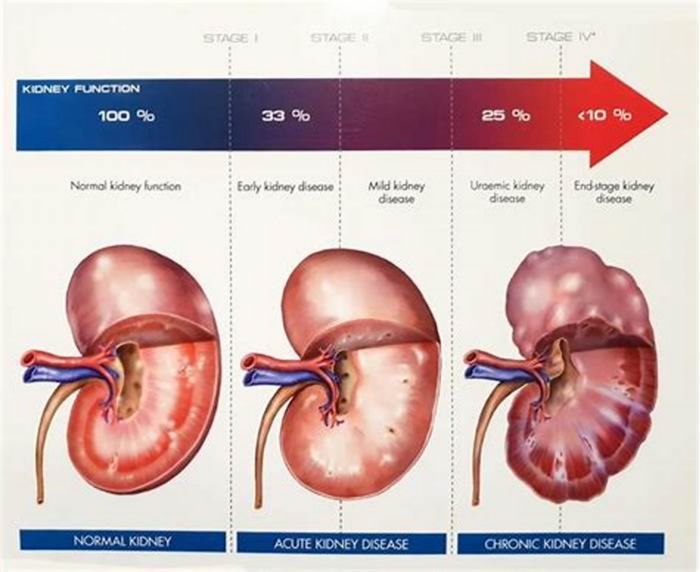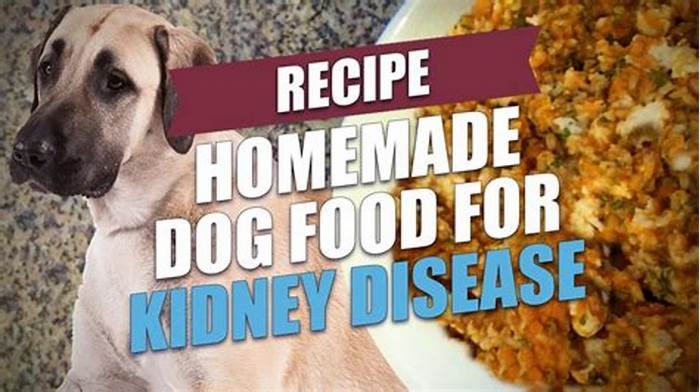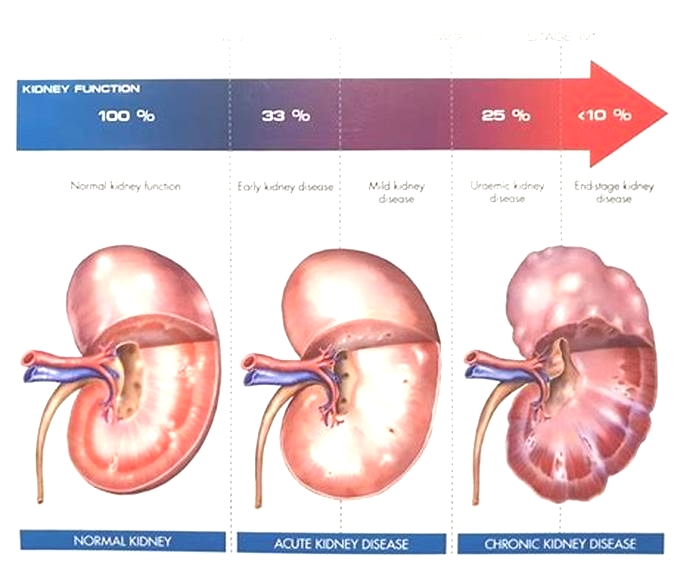what can i give my dog for kidney disease
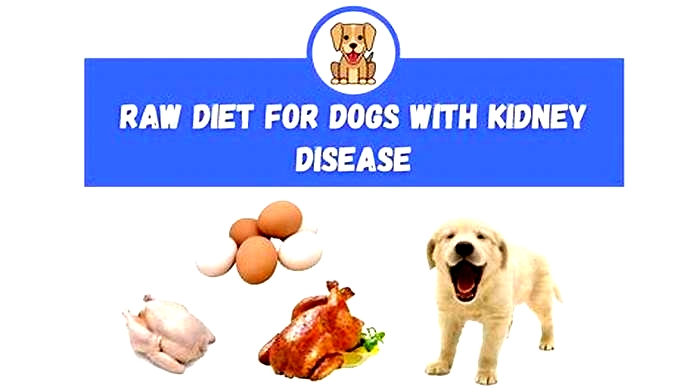
Dietary Guidelines for Dogs with Chronic Kidney Disease (CKD)
To provide the best experiences, we use technologies like cookies to store and/or access device information. Consenting to these technologies will allow us to process data such as browsing behavior or unique IDs on this site. Not consenting or withdrawing consent, may adversely affect certain features and functions.
The technical storage or access is strictly necessary for the legitimate purpose of enabling the use of a specific service explicitly requested by the subscriber or user, or for the sole purpose of carrying out the transmission of a communication over an electronic communications network.
The technical storage or access is necessary for the legitimate purpose of storing preferences that are not requested by the subscriber or user.
The technical storage or access that is used exclusively for statistical purposes.The technical storage or access that is used exclusively for anonymous statistical purposes. Without a subpoena, voluntary compliance on the part of your Internet Service Provider, or additional records from a third party, information stored or retrieved for this purpose alone cannot usually be used to identify you.
The technical storage or access is required to create user profiles to send advertising, or to track the user on a website or across several websites for similar marketing purposes.
Nutrition and diet play an instrumental role in supporting normal kidney function in both people and pets. As dogs age, they may become prone to developing problems with their kidneys, especially among certain breeds such as the English Cocker Spaniels, German Shepherds, Samoyeds, Cairn Terriers and Bull Terriers. Its estimated that around 10% of dogs will develop kidney problems at some point in their lives. Its important to note, however, that a diagnosis of kidney disease isnt necessarily a death sentence for your precious pup.
Incorporating the right foods into your dogs diet can help make all the difference in positively benefiting their quality of life. Dogs eat a variety of foods, but mainly meat. When theyre suffering from kidney issues, however, its important to try adding in some more carbohydrates, fruits and vegetables.
Although dogs have no nutritional need for carbohydrates, changing their diet so that it is comprised of at least 50% carbs can keep their phosphorous levels low and extend the life of the kidneys.
Some of the best grains/carbohydrates to add include:
- Farina
- Pasta
- Sweet potatoes
- Winter squashes
Vegetables and fruits are also a good way to get your dog the vitamins their bodies are craving and help optimize their defenses and support kidney function.
Keep in mind, any vegetables you plan on feeding your dog should be pureed, cooked or blended in a food processor/blender in order to ensure good digestion.
Additionally, cooking is encourage because it leaches out phosphorous which must be monitored closely when dealing with any kind of kidney problem, as impaired kidneys have a harder time excreting these minerals, which become toxins within the body when they cant be flushed out.
Boiling or steaming removes more phosphorous than baking, so these should be some of the go-to cooking methods you opt for.
Here are a few tips to keep in mind regarding vegetables and your dogs kidney diet:
- Avoid parsley, dandelion and celery parsley and dandelion greens are diuretics, which may not be desirable for dogs with kidney disease.
- If your dog also suffers from arthritis, avoid tomatoes, peppers, white potatoes and eggplant.
- Cabbage holds benefit for ulcers, which are common with kidney disease.
- Lower phosphorous choices include collard greens, green peppers, beets, carrots, cauliflower, celery, squash and zucchini.
- Fruits to feed include apple, cantaloupe, cranberries, banana, mango, peach, pear and pineapple.
- Again, if your dog suffers from arthritis, a few fruits like mango and papaya are especially useful.
- It should go without saying, but never feed your dog grapes and raisins. Also limit fruit intake, as excessive fruit consumption may lead to loose stools.
In conclusion, there is a rich, abundant assortment of fruits and vegetables to include in your dogs diet that could help them look and feel better than they have in a long time, so always be mindful about what youre feeding them.
For supporting good kidney health in your pets visit our store to read about our two products designed for cats and dogs with kidney issues.
How to Cook Chicken for Dogs With Kidney Disease (Easy Steps & Complete Guide)
Cooking for dogs with kidney disease can be a delicate process, as they often need very lean proteins and have trouble processing protein in general. To cook chicken for dogs with kidney disease, youll want to serve boiled, skinless chicken in low quantities.
But how should you cook chicken for dogs with kidney disease? What does kidney disease mean for your pup? Read on to find out everything you need to know about how to cook chicken for dogs with kidney disease.
The cooking process
Cooking chicken for dogs with kidney disease is all about reducing the fat content of the chicken and taking advantage of how lean of a protein it is. In order to do this, youll want to follow these simple instructions.
First, take the skin and bones out of your chicken. These not only increase the nutrition content (especially of nutrients that dogs with kidney disease cant properly process), but the skin makes the food excessively fatty and the bones pose a choking hazard.
Boil the chicken until its cooked thoroughly. Afterward, drain the water out of the pot and put it on a cutting board. Using two forks, shred the chicken until its easily edible for your dog.
After this, you can serve it in your dogs bowl with whatever sides you decide are best for your dog. Make sure youre serving smaller portion sizes than you did when your dog was healthy, as proteins are difficult for your dog to process when its struggling with kidney disease.
Chicken Recipe
When preparing a meal for a dog with kidney disease that is chicken-based, its important to choose ingredients that are low in phosphorus and high in quality protein. Heres a recipe that you can consider:
Ingredients:
- 4 ounces of boneless, skinless chicken breast or thigh (cooked and chopped)
- 1/4 cup cooked white rice or quinoa
- 1/4 cup steamed or boiled carrots (mashed or finely chopped)
- 1/4 cup steamed or boiled green beans (mashed or finely chopped)
- 1 tablespoon chopped fresh parsley (optional, for added flavor)
- 1 teaspoon fish oil or flaxseed oil (optional, for essential fatty acids)
- 1/4 teaspoon calcium carbonate (consult your veterinarian for the appropriate amount)
- Water for cooking and consistency as needed
Instructions:
Cook the chicken breast or thigh thoroughly by boiling or baking it. Make sure its fully cooked without any seasonings, additives, or bones. Remove any skin and excess fat before chopping it into small, manageable pieces.
Cook the white rice or quinoa according to the package instructions. Ensure its fully cooked and cooled before using it in the recipe.
Steam or boil the carrots and green beans until they are soft. Mash or finely chop them to make them easier for your dog to digest.
In a mixing bowl, combine the chopped chicken, cooked rice or quinoa, mashed carrots, mashed green beans, and chopped parsley (if using). Mix well to evenly distribute the ingredients.
If desired, add fish oil or flaxseed oil to provide essential fatty acids. These oils can help promote healthy skin and coat.
Add the appropriate amount of calcium carbonate to the mixture. The exact amount will depend on the size of your dog and should be determined with guidance from your veterinarian.
Gradually add water to the mixture to achieve the desired consistency. Some dogs prefer a more moist meal, while others prefer it to be drier. Ensure its easy for your dog to eat and digest.
Serve the meal immediately, or portion it into individual servings and refrigerate or freeze for later use. Remember to thaw frozen portions before feeding them to your dog.
Note: Its crucial to consult with your veterinarian before making any dietary changes, especially for dogs with kidney disease. They can provide specific guidance based on your dogs condition and individual needs.
How much chicken to serve dogs with kidney disease
As mentioned above, its quite difficult for dogs with kidney disease to process proteins, even ones as lean and healthy as boiled, skinless chicken. That being said, youll want to cut back on how much chicken youre giving a dog with kidney disease as compared to their healthy counterparts.
1/2 a cup of food for every 25 pounds of body weight is a decent rule of thumb. Of course, dogs that are more active or exercise daily may need more, while older dogs, younger dogs, smaller dogs, or lazier dogs may require less.
How often to serve chicken to dogs with kidney disease
Chicken is a fine meal to serve to dogs daily, even those with kidney disease. Even though they have trouble digesting and processing it, protein is still a core part of their diet. It helps dogs grow muscle that not only helps them with daily activities such as walks, play, and exercise, but is also crucial for basic functions like standing up, walking, sitting down, and other movements.
Health benefits of chicken for dogs with kidney disease
The main health benefit present in chicken for dogs with kidney disease is protein. Since dogs with kidney disease have a hard time digesting and processing protein correctly, its extra important that youre picky with how your dog is getting this essential nutrient.
It is also very low fat and high in vitamins and minerals that help the overall physical health of your dog.
Things to watch out for when serving chicken to dogs with kidney disease
Of course, youll still need to watch out for how the protein is affecting your dog. Kidney failure is very complicated, so some dogs can handle more protein than others while theyre experiencing kidney disease.
To know for sure if chicken, or any diet change, is the right change for your dog, its important to consult your vet. Your vets guidance should be a crucial step in the decision-making process when it comes to what youre looking out for and what youre feeding to your dog.
What is kidney disease?
Kidney disease, renal disease, kidney failure, or renal failure are all terms for when your dogs kidneys arent working properly. Kidneys filter out waste and excrete it as urine, control levels of calcium, control blood pressure, control levels of salt and water in the body, and more! If any of these functions is failing, thats very bad news for your dog.
Kidney disease should be taken extremely seriously and warrants an immediate visit to the vet.
Signs of kidney disease in dogs
If you see any of the following symptoms on a regular basis, your dogs kidneys might be failing. Seek veterinary help as soon as possible.
The signs to look out for are: more frequent urination, more frequent drinking, less frequent urination, urinating during sleep, blood in urine, decreased appetite, diarrhea, vomit, sudden weight loss, and hunched posture.
If you see any one of these signs with frequency or multiple signs, you should call up your vet and ask what the next steps should be!
Alternative proteins for dogs with kidney disease
Chicken isnt the only protein that is fine for dogs with kidney disease.
Other lean proteins are good as well. Eggs (in moderation), as well as dog-friendly fish (such as salmon), are good replacements if chicken wont work for your dog.
Water for dogs with kidney disease
If youre suspecting your dog has kidney disease (or its been confirmed by a veterinarian) you want to have it drinking only distilled or filtered water. This will be easier for the kidneys to process and will help with the treatment and recovery.
Sides to serve with chicken for dogs with kidney disease
Brown rice is the best side to serve with the chicken for dogs with kidney disease. This is because it is very easy for dogs to digest.
Vegetables are also crucial to any dogs diet. Kale, carrots, sweet potatoes, cucumbers, asparagus, and other dog-safe vegetables provide the vitamins and minerals needed to make sure your dog stays as healthy as possible.
Just avoid any vegetables or sides that are high in phosphorus, as these are not easily processed by dogs with failing kidneys.
Feeding schedule of dogs with kidney disease
Dogs with kidney disease seem to do better with more frequent, smaller meals throughout the day. Try four or so smaller meals in a day rather than two large ones and see if your dogs symptoms improve!
Special Note from Sabrina Kong, DVM, on Kidney Disease Diets
The diet for a dog with kidney disease often varies from dog to dog mainly depending on the stage of the disease.
Preparing and cooking your dogs diet when they suffer from kidney disease is the option that offers you more control and guarantees they are receiving the right nutrients they need for their health.
Now, there are some debates in terms of how you should be cooking it, as the word cooking is one of the debates points. During the last few years, the BARF diet has been one of the most accepted ones for feeding dogs in general but also for dogs with kidney disease.
The BARF diet covers the nutrients dogs with kidney disease need:
- high-quality proteins
- omega-3 fatty acids
- fish
- veggies
- low levels of phosphorus and sodium
This diet consists of feeding dogs raw high-quality meats, bones, fruits, veggies, and supplements that include omega-3.
The most important thing to consider when switching your dog to a diet designed for kidney disease is that they still need high-quality proteins that are easy to absorb by the body, thats why I recommend homemade diets instead of storebought foods as those rarely cover the special needs for this kind of condition.
(Source Sabrina Kong, Doctor of Veterinary Medicine, from WeLoveDoodles.com)
What Not To Feed Your Dog With Kidney Disease
Registered veterinarian Dr. Corinne Wigfall, of SpiritDogTraining.com, noted you should avoid raw feeding and feeding treats high in salt such as cheese and meats from the deli such as salami. Be careful feeding commercial dog treats- many are high in sodium and protein which is not ideal for kidney disease.
Do not feed your dog a home cooked diet that is purely meat, or a home cooked diet that you have not run past a veterinarian as you may not have reached the minimum requirements for good health.
My name is Danny Jackson and Im the CEO and Chief Editor behind Petloverguy.com. After spending a decade working with vets and private clients as an animal behavioral and nutritional specialist I co-founded Pet Lover Guy to help other pet parents learn how to interact with, and make the most of the time that they spend with their adopted and rescued best pet friends.Working with Ella, our chihuahua rescue, we seek to help all dog and cat lovers have the happiest life possible.


